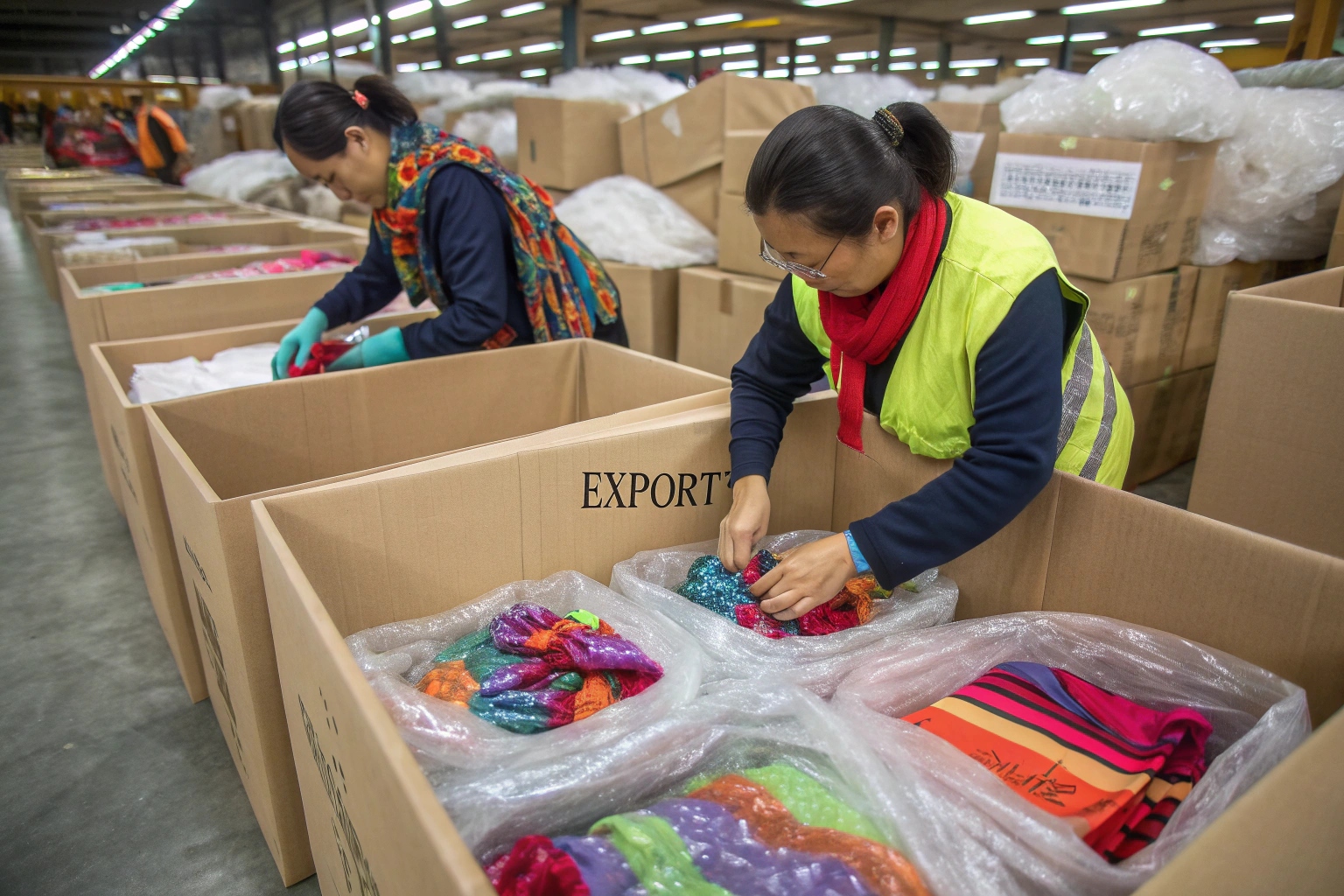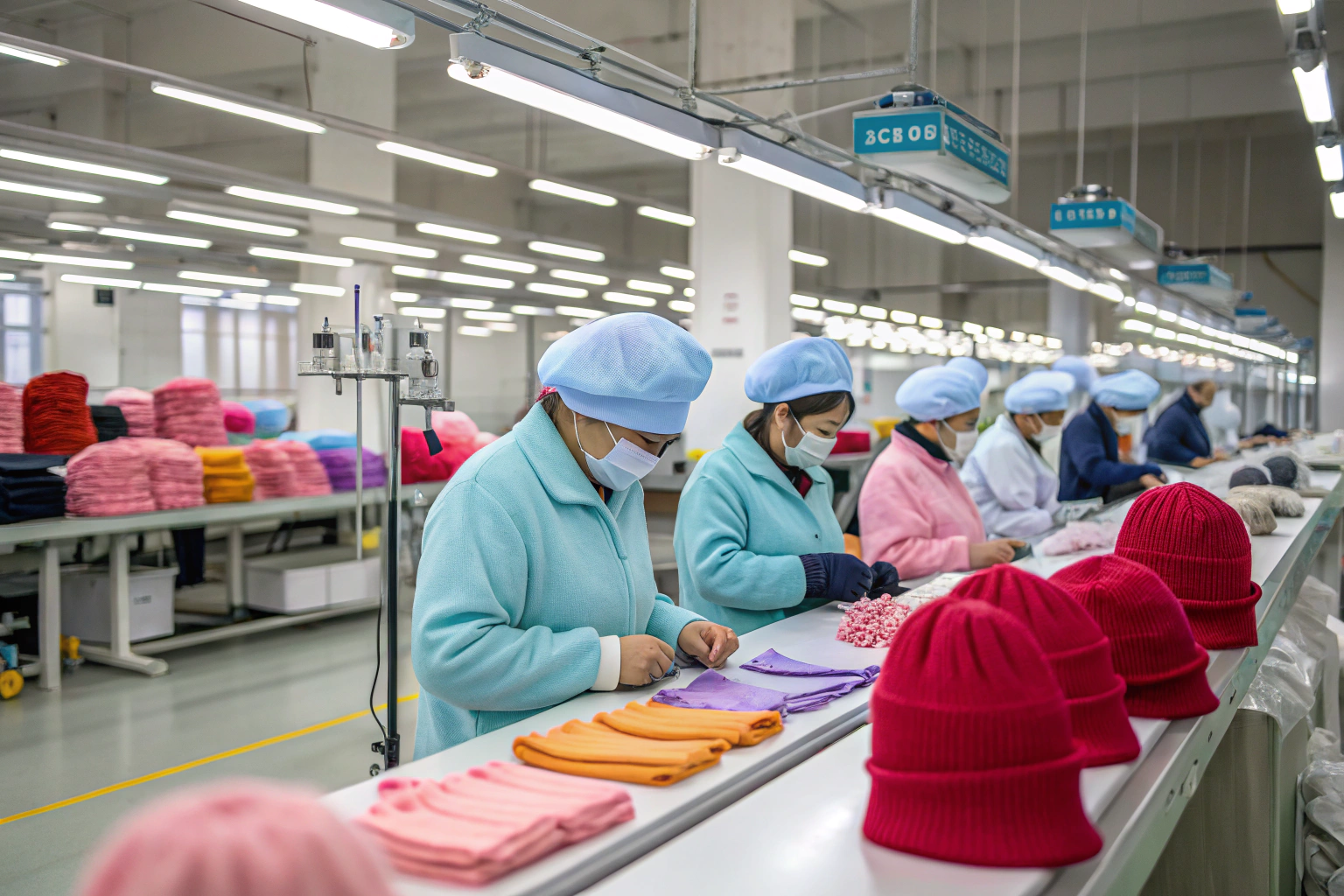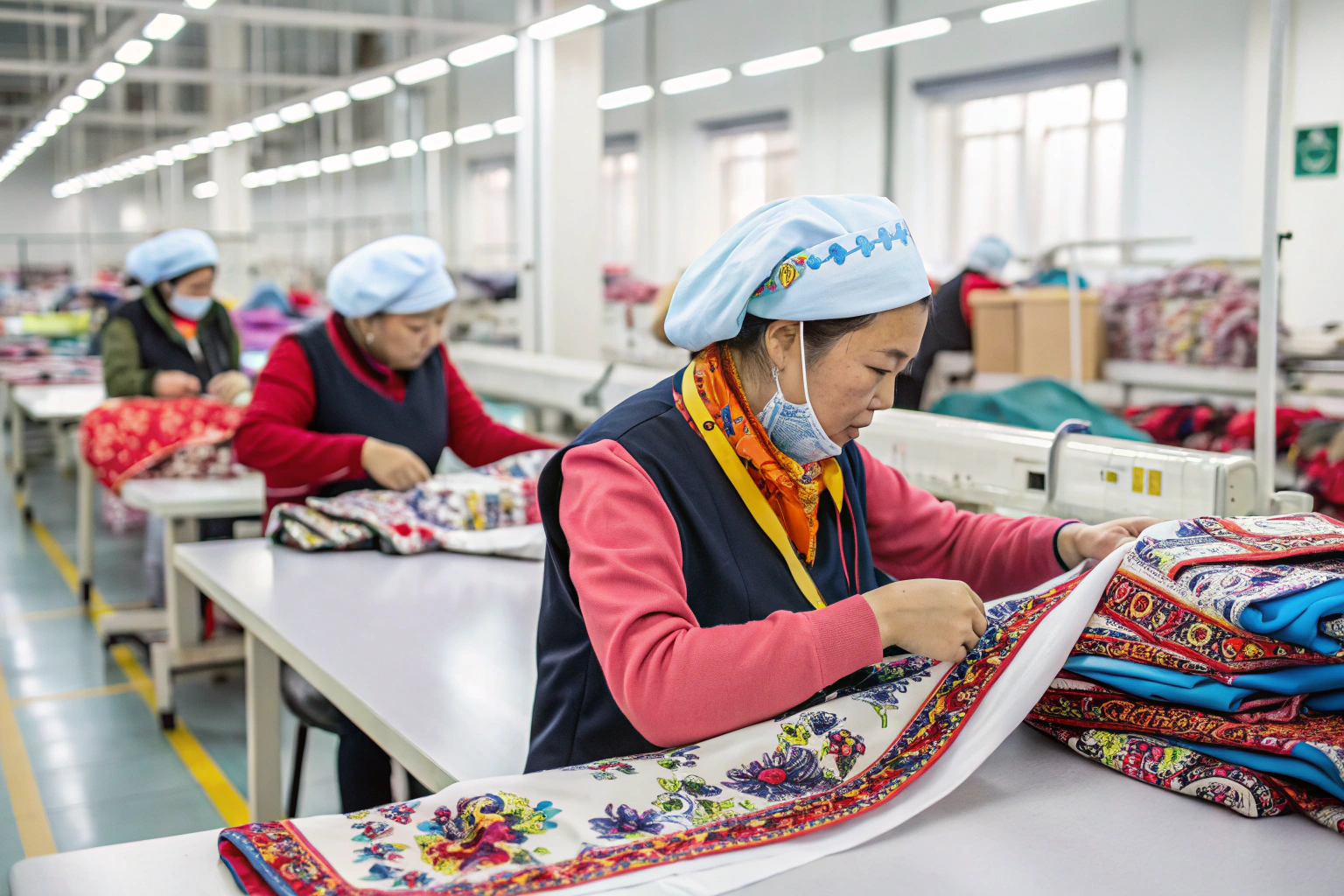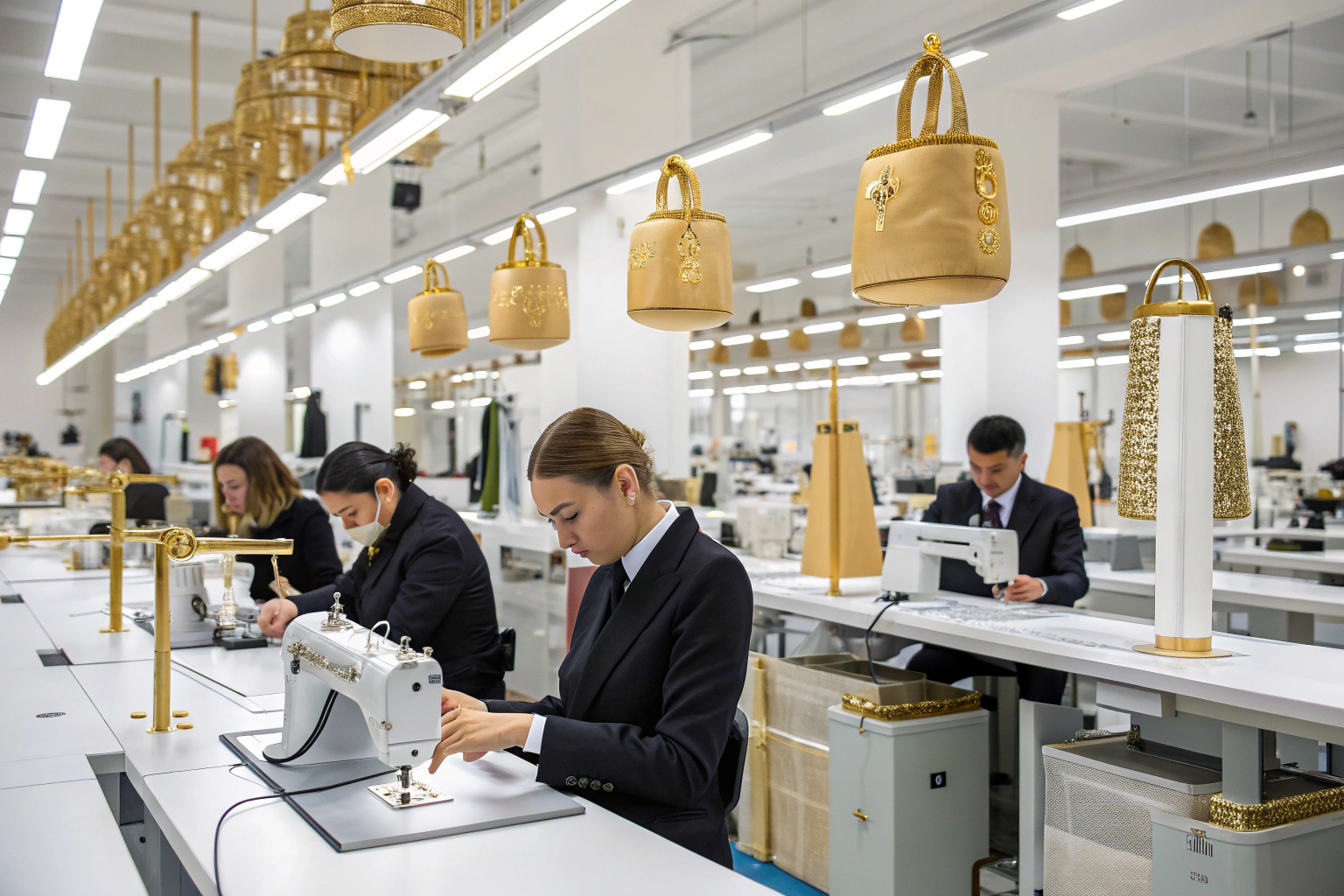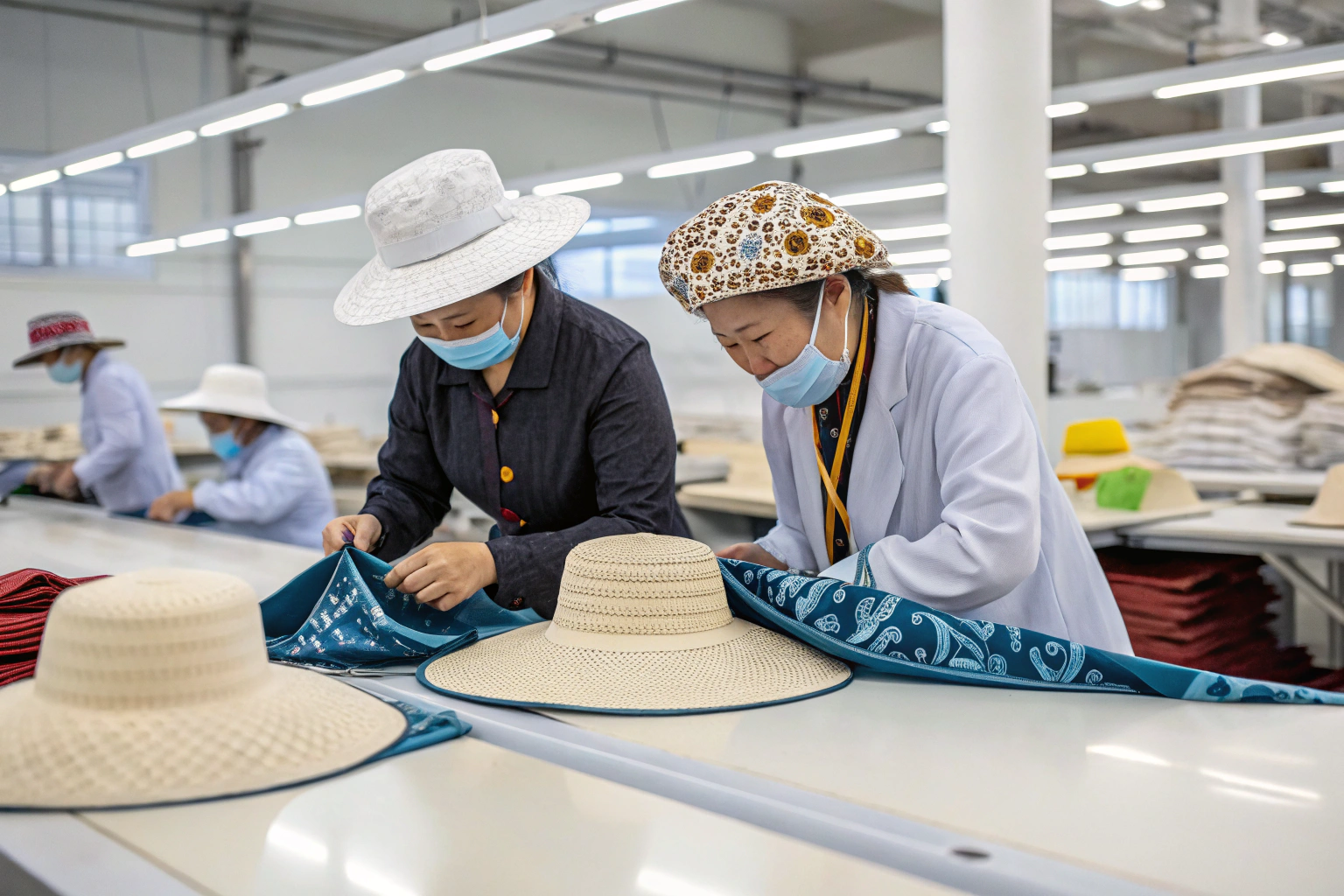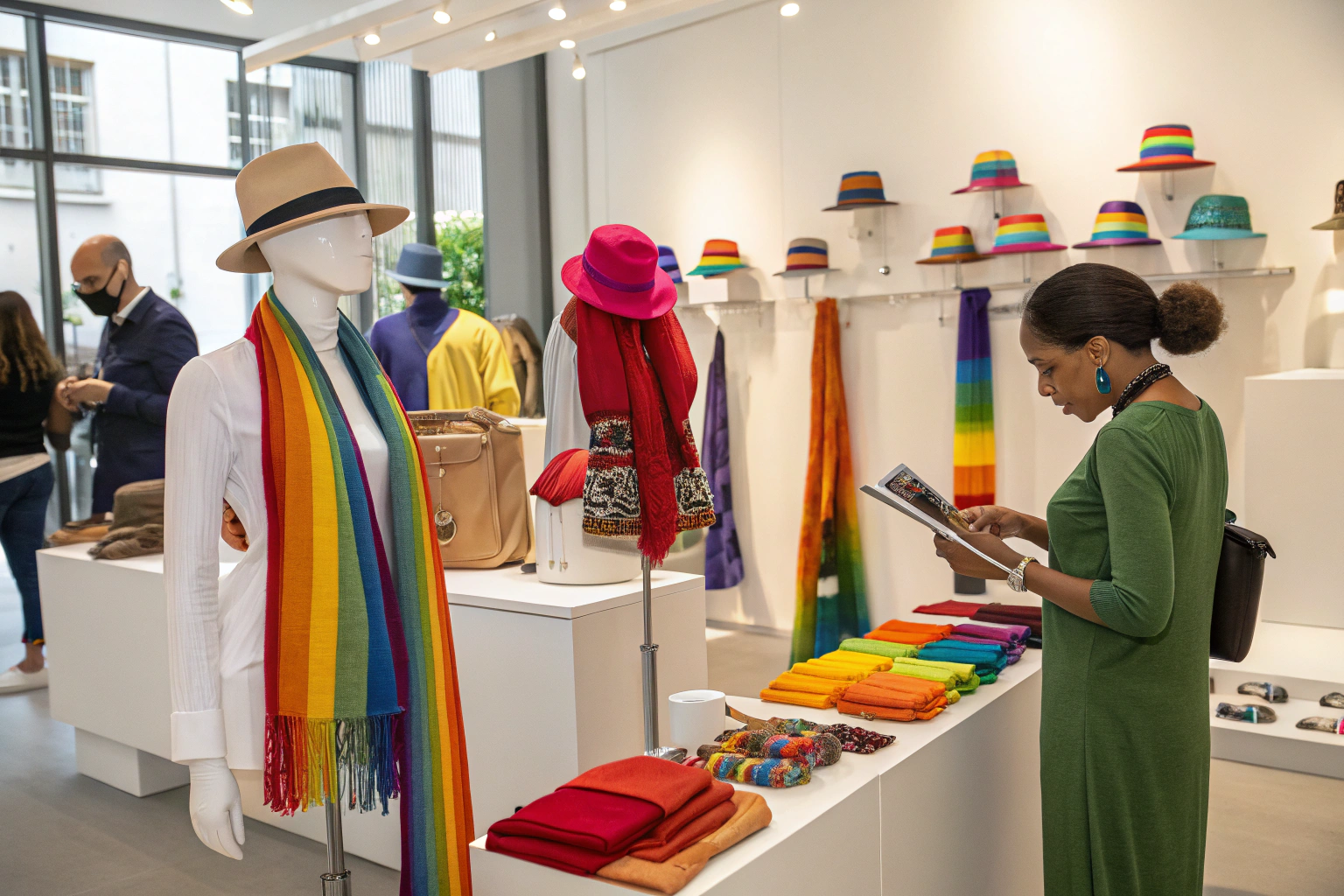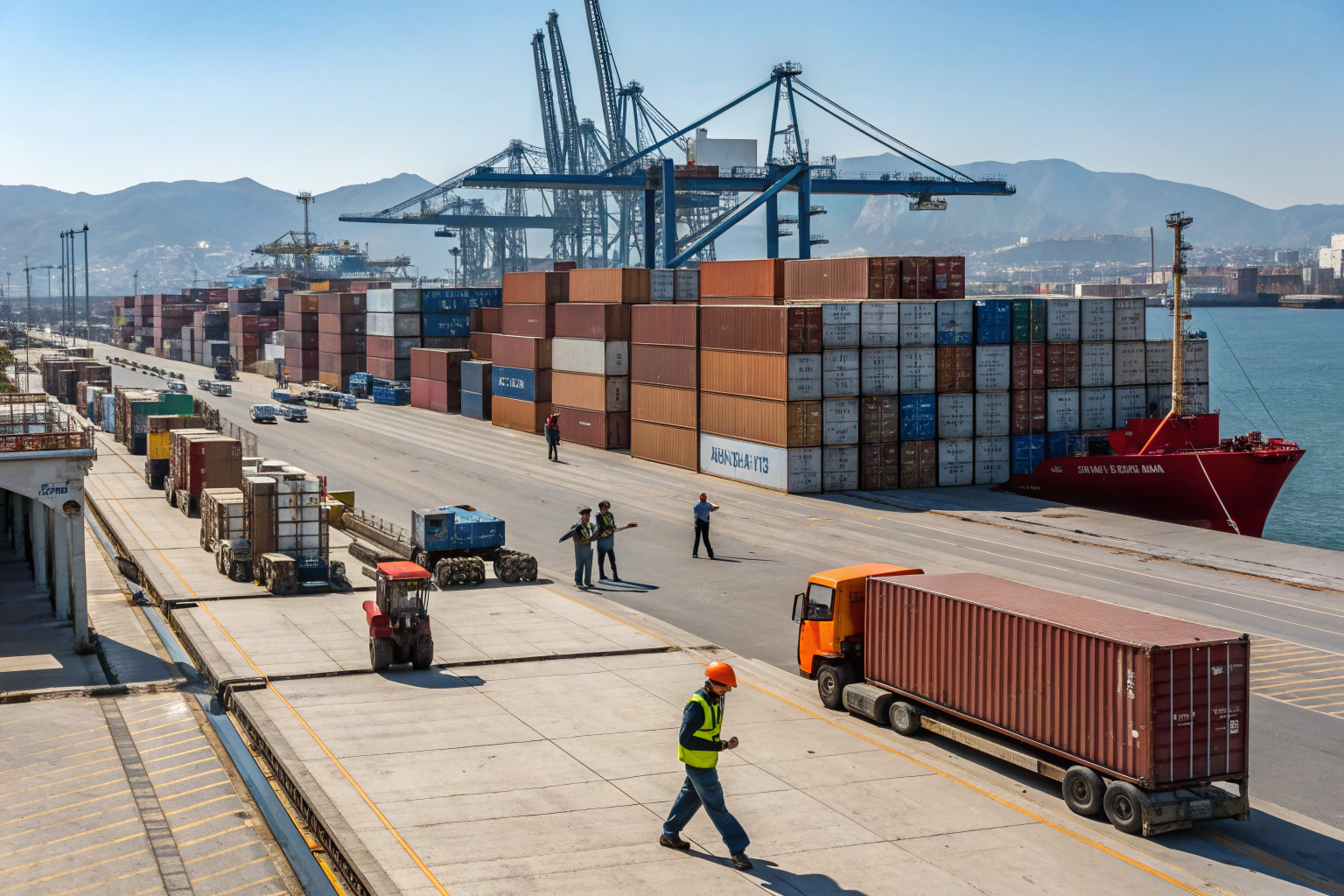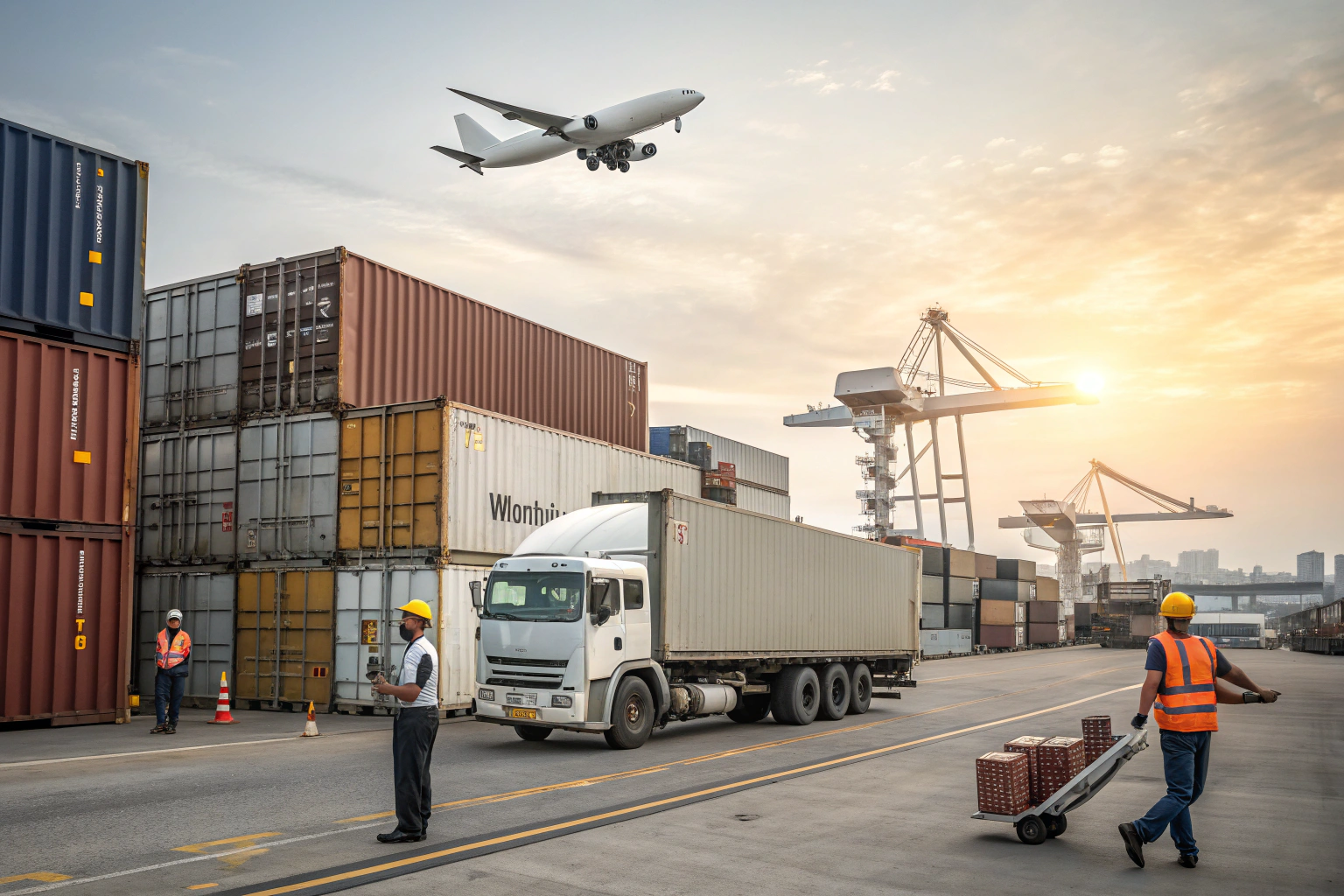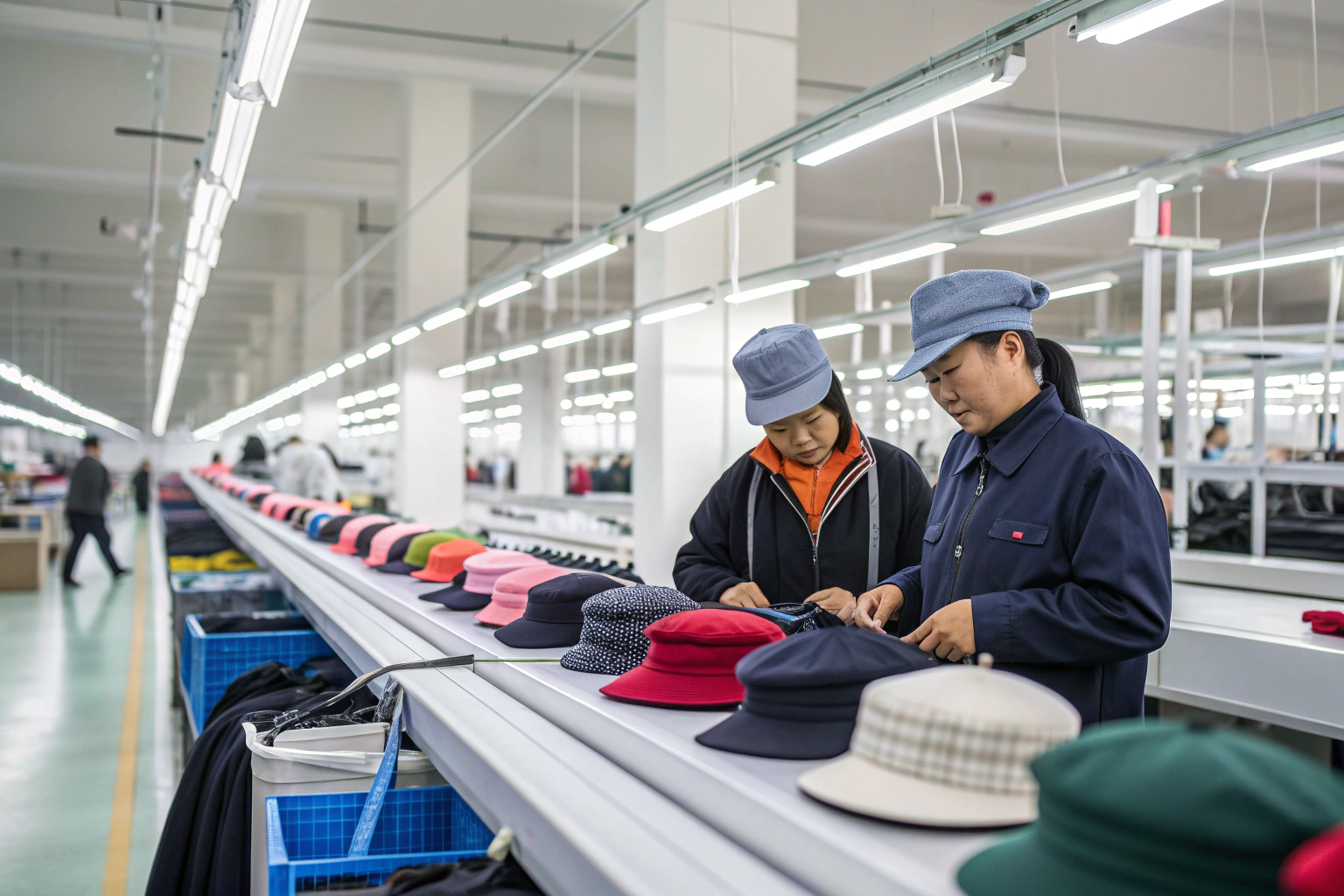Scarves may seem lightweight and flexible, but shipping them in bulk—especially by sea—can still lead to damage, delays, or poor presentation.
The best packaging for scarf container shipments includes polybags, moisture-proof liners, reinforced cartons, and accurate labeling for safe, clean, and customs-compliant delivery.
As the owner of AceAccessory, I’ve shipped thousands of scarf orders from China to the U.S. and Europe. In this guide, I’ll share our best practices to protect quality and impress your buyers—even after a 30-day ocean journey.
How to package scarves for shipping?
Many buyers assume scarves are “easy to pack”—until they arrive wrinkled, wet, or moldy.
Scarves should be individually packed in polybags, grouped by color and size, sealed in moisture-resistant cartons, and palletized with corner guards for container shipping.
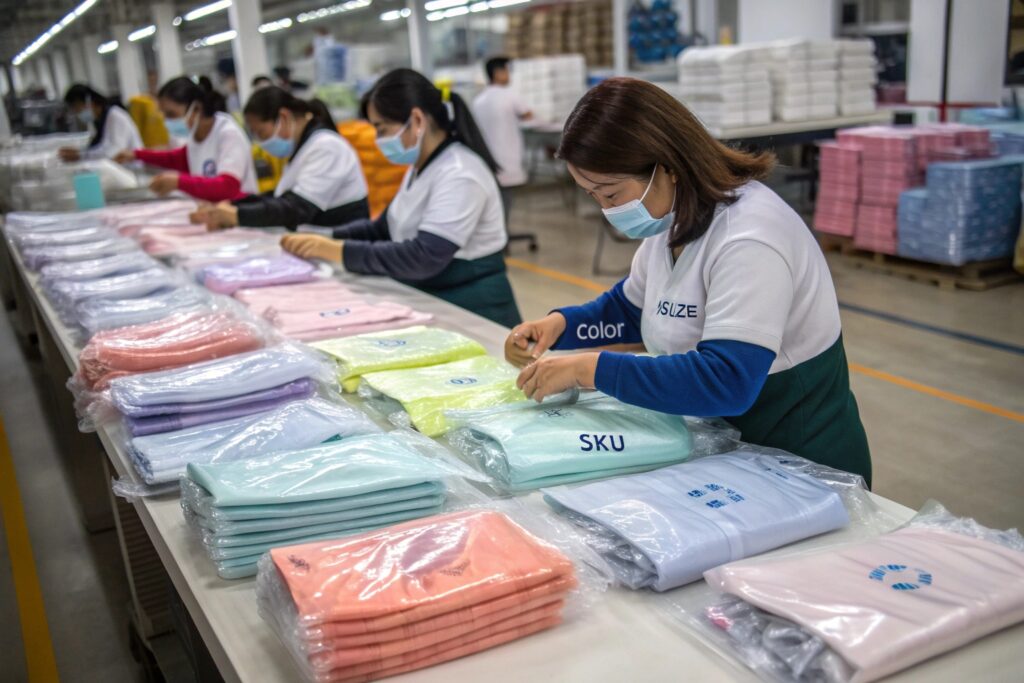
Why do we use multi-layered packaging to protect scarves during shipping?
Scarves may not break like ceramics, but they’re extremely sensitive to moisture, mold, and deformation. If they absorb water or dust during transit, it can ruin your retail value.
Here’s how we package bulk scarf shipments:
- Step 1: Fold each scarf neatly and place it in an OPP polybag (heat-sealed or with a resealable flap)
- Step 2: Group polybags by SKU and bundle them into master bags (usually 10 or 20 per group)
- Step 3: Use thick double-wall corrugated cartons, each lined with a plastic moisture-proof bag
- Step 4: Add 1–2 silica gel packets per carton to absorb humidity
- Step 5: Seal cartons with waterproof tape and label clearly
- Step 6: Stack cartons on fumigated export pallets, corner-protected, and shrink-wrapped
| Protection Layer | Function |
|---|---|
| Polybag (individual) | Dust and contact barrier |
| Master bundle bag | Sorting and SKU separation |
| Plastic liner (carton) | Moisture control |
| Silica gel packets | Absorb ambient humidity |
| Shrink wrap (pallet) | Prevents water ingress in transit |
We’ve shipped to department stores in the U.S. where packaging standards are strict. Even when shipments face storms or humidity at sea, our scarves arrive fresh and store-ready.
Can scarves be packed in rolls or flat—what’s better for shipping?
Both methods work, depending on the scarf type:
- Flat folding is best for silk or polyester scarves that crease easily
- Rolling works better for knits, winter scarves, and shawls that can hold shape
We consult clients before every shipment. In fact, some clients request “presentation rolls”—where scarves are rolled and banded with logo stickers, then packed directly in retail display boxes.
By matching packaging to fabric type, we avoid wrinkles and cut down unpacking labor at the warehouse.
How to gift a scarf?
Retailers and B2B buyers often ask about packaging scarves not just for protection—but also for presentation.
To gift-wrap scarves professionally, use folding boards, tissue wrap, branded belly bands or boxes, and include a care tag or thank-you card.
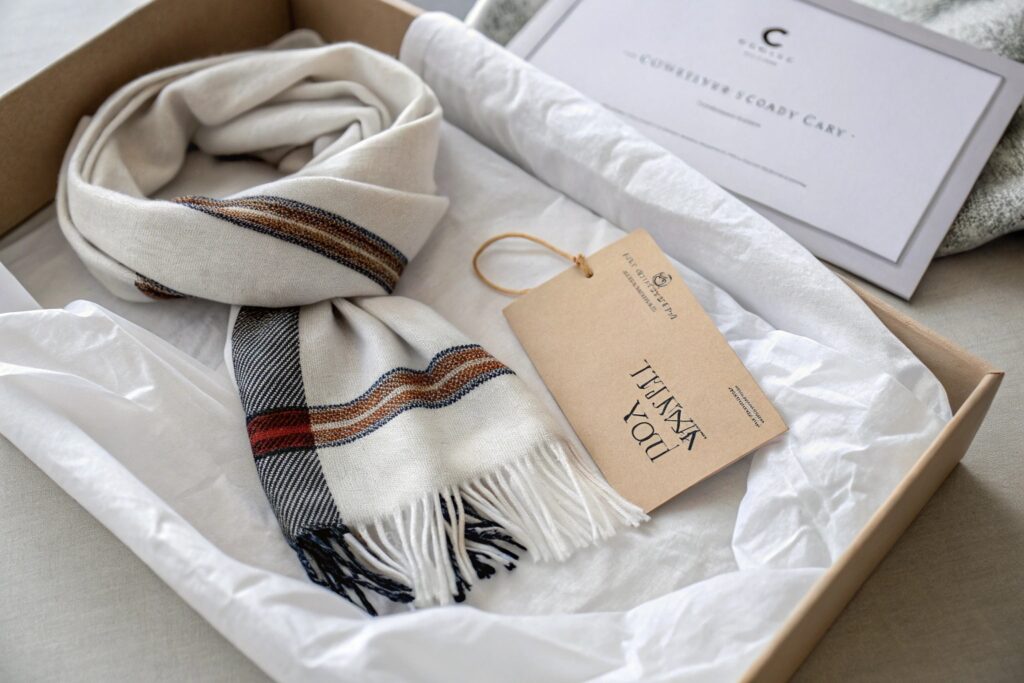
What gift packaging options work best for scarves in wholesale or boutique sales?
If you're supplying scarves to chain stores, department stores, or DTC brands, packaging presentation becomes part of your brand.
Here are a few options we offer:
| Gift Style | Includes | Cost per Unit (Est.) |
|---|---|---|
| Simple Wrap | Tissue + belly band + barcode sticker | $0.05–$0.08 |
| Boxed Wrap | Folded + gift box + care tag | $0.20–$0.45 |
| Eco-Pack | Kraft paper wrap + FSC hangtag | $0.10–$0.18 |
| Premium Retail | Rolled + magnetic box + ribbon closure | $0.60–$1.00 |
We also offer custom stickers, printed ribbon, and QR-coded care guides.
Many of our U.S. customers use these options to ship DTC directly. We pre-pack and label every unit—so when it lands in your 3PL or warehouse, it’s ready to ship without repacking.
What if I want scarves gift-ready for Amazon or Shopify orders?
We support FBA (Fulfilled by Amazon) prep and Shopify-ready packaging. That means:
- Individual packaging with FNSKU or barcode
- Transparent polybags with suffocation warning (for Amazon compliance)
- Ready-to-mail boxes with branding
For DTC brands, we can include thank-you cards, “unboxing messages,” and logo tissue. You give us the design—we print and apply.
This adds perceived value and cuts your fulfillment time.
How to Prevent Damage During Sea Freight
Even with good packaging, scarves face risks during 20–40 days at sea.
To prevent damage during scarf sea freight, use moisture barriers, secure palletization, and avoid overpacking to preserve shape and texture.
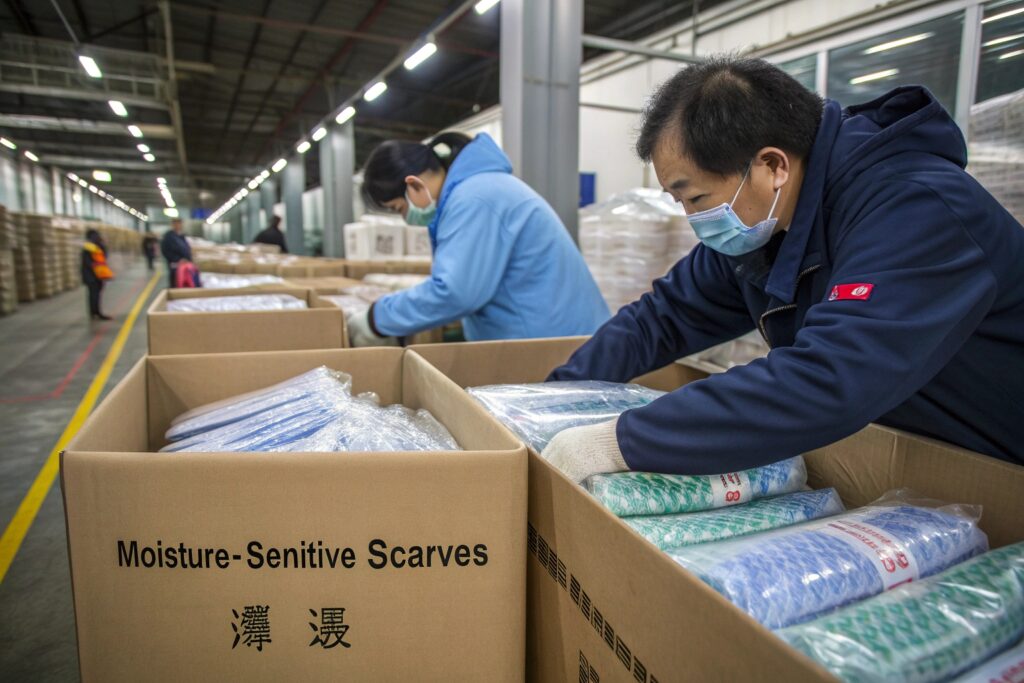
What are the most common shipping risks for scarves in ocean containers?
The biggest threats are:
- Humidity and “container rain” – condensation can form on container ceilings and drip onto cartons
- Compression damage – cartons get crushed if not stacked properly
- Contamination from other cargo – nearby goods like leather or chemicals may affect odor or color
- Labeling errors – lead to customs delay or warehouse mismatch
Here’s how we prevent each:
| Risk Type | AceAccessory Solution |
|---|---|
| Moisture | Plastic liners + silica gel + vented pallets |
| Crushing | Double-wall cartons + stackable configurations |
| Odor transfer | Use of sealed interior bags + outer wrap |
| Label confusion | Barcoded, color-coded carton labels |
We also avoid loading scarves near oil-based or scented goods in mixed containers. If you use a shared container (LCL), make sure your freight forwarder keeps textile cargo separate.
If you ship full container loads (FCL), we pack every row ourselves to maximize airflow and carton integrity.
Is it worth using vacuum packing or compression packing for scarves?
For lightweight items like scarves, vacuum packing saves space—but at the cost of presentation. Knit scarves and winter shawls may wrinkle or compress too much.
We offer vacuum packing for industrial clients, but for fashion brands, we don’t recommend it unless the scarf will be ironed or steamed later.
Instead, we offer semi-compressed bundling, where items are stacked tight but not vacuumed. This reduces volume by 10–20% without ruining shape.
Custom Labeling Tips for Scarf Shipments
Scarf buyers often face problems with sorting, repacking, and customs delays—not because of the scarves themselves, but because of poor labeling.
To avoid delays, every scarf shipment should use clear labels on units, master bags, and cartons, with product names, codes, and barcodes matched to packing lists.
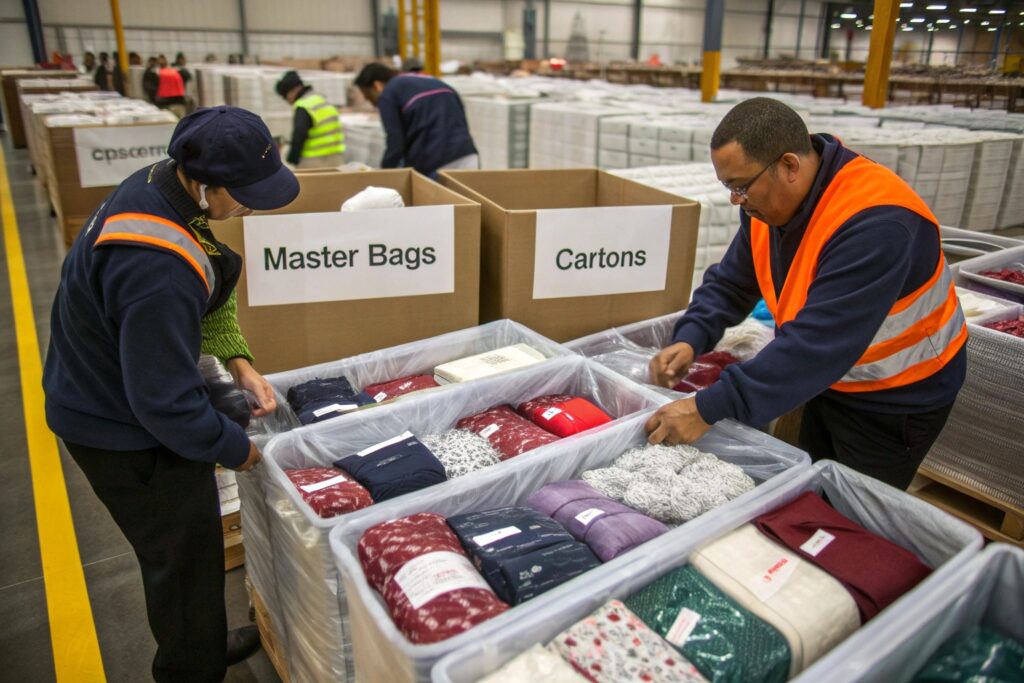
What kind of labels should be applied to individual scarves, inner packs, and outer cartons?
Here’s our standard structure:
| Layer | Label Type | Includes |
|---|---|---|
| Unit Level | Printed sticker or sew-in | Style name, SKU, size, barcode |
| Inner Polybag | Flap or sticker label | SKU, qty, fabric type |
| Master Bag | Bundle label | Product group, bundle # |
| Carton Label | Outer sticker | Carton #, PO, total pcs, weight |
For retailers like Target or Macy’s, we follow their exact vendor manual specs. For Amazon sellers, we generate FNSKU labels. And for boutiques or Shopify users, we print stylish minimalist tags with QR codes or social media handles.
We also support UPC generation, RFID embedding, and batch coding if required by your importer or customs agency.
Can custom branding be added without raising declared value or attracting tariffs?
Yes, but you need to be strategic.
- Printed labels, tags, and stickers don’t affect HS code or value
- Embroidered logos or metal charms may increase unit value
- To stay tariff-safe, we advise using separate removable elements (like branded bands)
This lets you keep branding strong without impacting customs classification or duties. We’ve helped U.S. clients avoid up to 15% extra duties just by moving branding from sewn-in to applied-after-import.
Conclusion
Packaging scarves for international shipping—especially by sea—takes more than a polybag and a hope. At AceAccessory, we help you protect fabric, impress buyers, and clear customs with no drama. Whether you're shipping 200 or 200,000 units, we’ve got the experience and systems to get your scarves delivered right.

